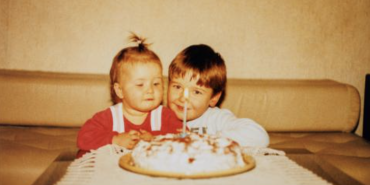Lost and Broken
Keith Wright, former Kansas City District superintendent, will be forever known for his words, "Lost and broken people matter to Jesus."
In Luke 15, there are three stories about the lost. I've been studying this chapter for many years and recently it occurred to me that Jesus was talking about recovery just as much as he was talking about lostness. Is there something to be learned about the missional activity of reaching lost and broken people from these parables? Do these three stories help us better understand the activity of evangelism by teaching us key facts about lostness?
In thinking about the Savior's self-description as one who came "to seek and to save the lost," I wondered if Jesus was telling us something about the challenge of reaching lost people.
The sheep was lost, without resources, unable to save itself, so the shepherd went looking for the lost sheep.
In some situations there is no question that something is lost. Just as the sheep was lost, there is little to no possibility that the lost person will be able to take the initiative toward recovery in his own power. The lost object, in this case the sheep, offers no objection or resistance to recovery. Many lost individuals comprehend the futility, hopelessness, and lack of any control in their situation but have not the power to effect change.
The coin, on the other hand, was lost in a safe, familiar place: home. The owner had to search diligently for the lost property even though everything looked proper and in its place.
In some situations there is little to suggest lostness. It is not until the day of accounting comes that one discovers the loss. Everything seems "normal" and in its place. The property owner may know something is lost. To the observer, however, nothing appears out of place or missing.
The son who had run through his inheritance in reckless living was lost. He had used up all his preferred resources, and the reality of his situation was all too clear. Looking around him, everything pointed to the horrific gulf that existed between what he once was, and what he had now become. It didn't take long for harsh reality to set in. To say he was eager to end his subsistence in a hostile environment was an understatement. No one was ever more ready to go home than him.
In reading these parables in Luke, reaching the prodigals seems the most likely place to begin. The prodigal is ready. All we need to do is to confirm the invitation.
Sometimes, so much dissatisfaction exists with present circumstances that the lost person is highly motivated to change, relocate, and transform. The memories of past pleasures have soured in the face of the grim realities of the present.
Reaching those who are so deeply entwined in the death-grip of sin, however, may be more difficult. For them, hope has all but vanished. Numbness has stilled the voice of hope and snuffed out the candle of anticipation. But if we go to where they are, who is to say they will they not accept our arms of embrace and allow us to carry them to Jesus?
Reaching those who do not recognize their lostness, and who exist with appearances that belie that reality, may be much more difficult. But such descriptions do not exclude them from our responsibility. They may be living with us in our homes, they may be neighbors with whom we fellowship.
So where do we begin in our response to Jesus' command, "Go and make disciples?"
- First, who are you in contact with every day, and where are they in relationship to Jesus' three stories in Luke 15?
- Second, what could you do to bring them to Christ in light of their need, situation, and characteristics?
- Third, what do you need to do to become more responsive to those around you?
David J. Felter is editor in chief of Holiness Today.
Holiness Today, January/February 2012
Please note: This article was originally published in 2012. All facts, figures, and titles were accurate to the best of our knowledge at that time but may have since changed.




